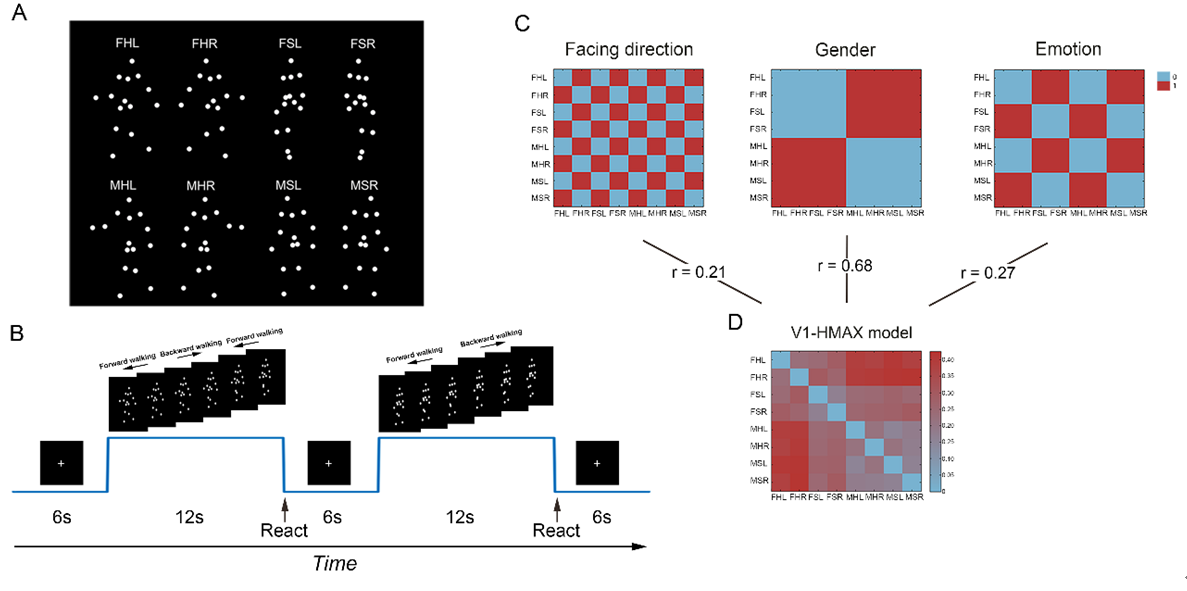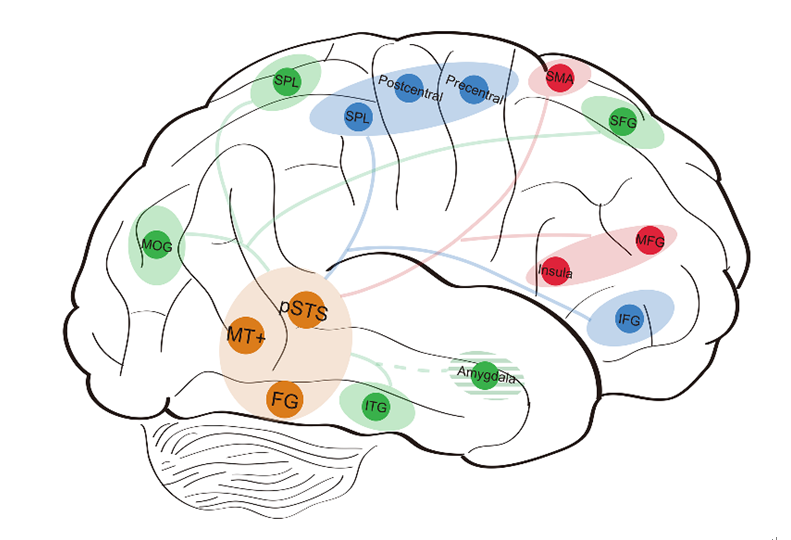Imagine this scene: when we sit by the roadside and watch people coming and going, we can effortlessly extract various information about them, such as walking direction, gender, and emotion, just through their postures and movements. Here, walking is a typical biological motion (BM), which refers to the kinesthetic information of living beings (i.e., humans and animals). The ability of BM perception is crucial for the organism’s survival social interaction. BM contains multi-dimensional attributes, including physical (e.g., walking direction and speed), biological (e.g., gender and age), and social attributes (e.g., emotion and intention). How does our brain extract each attribute from multidimensional BM stimuli and what is the relationship between the processing of different attributes?
A research team led by Prof. JIANG Yi from the Vision and Attention Lab, State Key Laboratory of Brain and Cognitive Sciences used functional magnetic resonance imaging (fMRI) to explore the neural mechanisms underlying the processing of multidimensional BM attributes in the human brain. They adopted point-light displays as test stimuli, which solely depict the movement trajectories of the main joints of a person by a set of dots (Figure 1). The researchers systematically manipulated three attributes of BM: walking direction, gender, and emotional state. Using a multiple regression representation similarity analysis (RSA), researchers identified the brain networks involved in the processing of these three attributes (Figure 2). The brain areas that encode the walking direction attribute are mainly located in the dorsal cortical areas, those representing the gender attribute are located in the frontal and temporal lobes, and the neural reprensenations of the emotional state attribute widely involve the dorsal and ventral cortical areas.

Figure 1. Stimuli and procedure of the study. Image by WANG Ruidi.

Figure 2. Results of multiple regression RSA. Image by Image by WANG Ruidi.
Furthermore, the researchers conducted an analysis that retained the target attribute while randomly disrupting other attributes. This method was used to analyze how the processing of one attribute is affected by the processing of other attributes. The results showed that the processing of walking direction is more influenced by the other dimensions, followed by the processing of gender, while the processing of emotional state is least influenced by the other dimensions.
These results suggest that the processing of multidimensional BM is not simply from the low-level physical attributes to the higher-level biological and social attributes, as previously assumed, but rather involves more complex recurrent processes. Based on the present findings as well as previous literatures, the researchers proposed a brain processing model for the multidimensional attributes of BM (Figure 3).

Figure 3. The model of a distributed and hierarchical system for BM attribute representations. Image by WANG Ruidi.
In summary, this study for the first time identifies the brain network underlying the processing of multidimensional attributes of BM, and reveals its hierarchical structure. These findings shed new light on gait recognition research and BM computation modeling.
This study was supported by the Ministry of Science and Technology of China and the National Natural Science Foundation of China. The study was published in Cerebral Cortex on April 28. WANG Ruidi is the first author of this article, who is a PhD candidate at the Institute of Psychology of the Chinese Academy of Sciences; LU Xiqian and Prof. JIANG Yi are co-corresponding authors of this article.
LIU Chen
Institute of Psychology Chinese Academy of Sciences
Beijing 100101, China.
E-mail: liuc@psych.ac.cn
